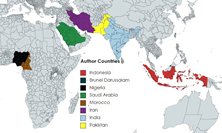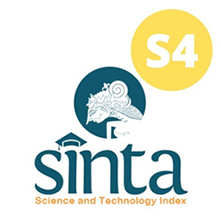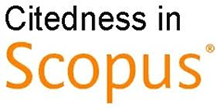Enhancing Accuracy in Mycobacterium Tuberculosis Counting on Acid-Fast Bacteria Sputum through Microscope Camera and Image Processing with Thresholding Method
Abstract
Tuberculosis (TB) is a chronic infectious illness. Pulmonary TB is still a global threat and concern. Currently, TB is among the top 10 causes of death in the world in 2015 and it is estimated that there are around 10.4 million new cases of TB in the world. 6 countries account for around 60% of new cases in the world: India, Indonesia, China, Nigeria, Pakistan, and South Africa. Globally, the TB death rate was around 22% of total world deaths from 2000 to 2015. This study introduces an innovative tool, the "Microscope Camera for Enhanced Mycobacterium Tuberculosis Counting in Acid-Fast Bacteria Sputum through Image Processing with Thresholding Method," designed to revolutionize the examination of tuberculosis (TB) samples. In response to the global threat of Pulmonary Tuberculosis, the tool employs a state-of-the-art CMOS-HD (Complementary metal-oxide-semiconductor High Definition) camera module and leverages the Python application for efficient image processing. The primary objective is to address the limitations faced by conventional diagnostic methods, particularly the challenges associated with the Rapid Molecular Test Method due to its dependence on expensive equipment, thereby making it less feasible for implementation in resource-constrained public health centers. The study underscores the persistent threat of TB as a global health concern, emphasizing its prevalence, with approximately 10.4 million new cases worldwide. Focusing on Ziehl-Neelsen stain sputum samples, the research seeks to elevate the accuracy of TB diagnosis by proposing a streamlined approach. This involves integrating a digital microscope system with a CMOS-HD camera module and utilizing advanced image processing techniques, specifically the Python Thresholding method. In the methodology, the research outlines a comprehensive data collection and analysis process. Mechanical and block diagrams illustrate the design of the module, while the system flow diagram elucidates the sequence of steps involved in TB sample analysis. The data analysis section employs metrics such as average, percentage error, and success percentage, providing a quantitative assessment of the system's performance. The results reveal an encouraging average system accuracy of 85.30%, demonstrating the potential of the developed tool to enhance the diagnostic process. However, the study transparently acknowledges areas for improvement, particularly in addressing discrepancies between manual and system calculations. The conclusion emphasizes the tool's promising role in assisting healthcare workers in detecting and counting TB bacteria in sputum, underscoring the need for ongoing refinements to achieve a definitive 100% accuracy and eliminate the possibility of misdiagnoses.

This work is licensed under a Creative Commons Attribution-ShareAlike 4.0 International License.
Authors who publish with this journal agree to the following terms:
- Authors retain copyright and grant the journal right of first publication with the work simultaneously licensed under a Creative Commons Attribution License that allows others to share the work with an acknowledgement of the work's authorship and initial publication in this journal.
- Authors are able to enter into separate, additional contractual arrangements for the non-exclusive distribution of the journal's published version of the work (e.g., post it to an institutional repository or publish it in a book), with an acknowledgement of its initial publication in this journal.
- Authors are permitted and encouraged to post their work online (e.g., in institutional repositories or on their website) prior to and during the submission process, as it can lead to productive exchanges, as well as earlier and greater citation of published work (See The Effect of Open Access).











